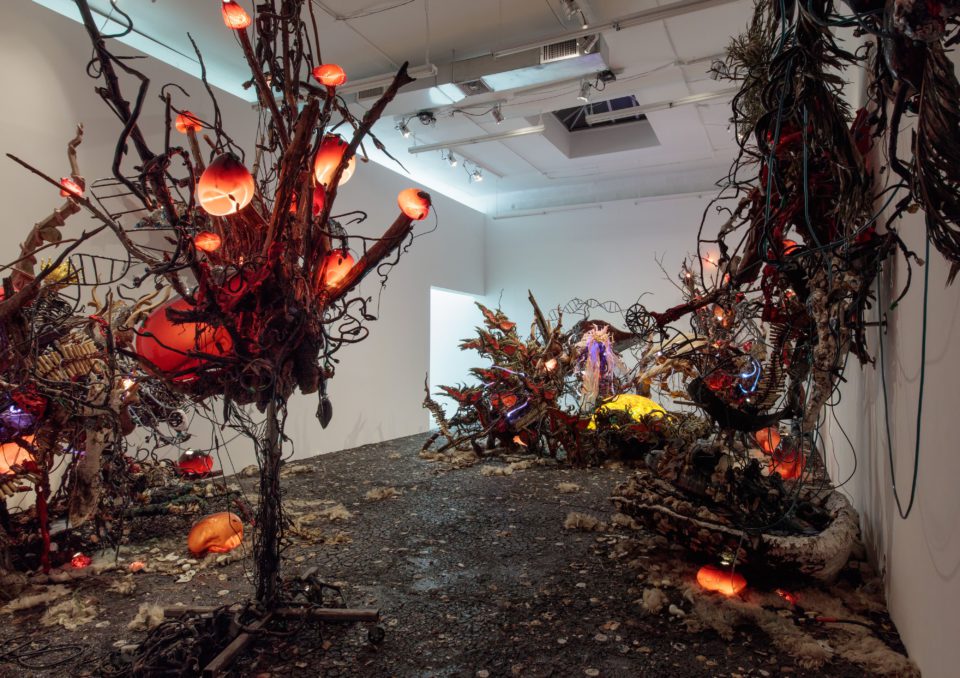Good Morning!
- Art adviser Ralph DeLuca has a theory about the wave of closures, lawsuits, and bankruptcies.
- Artsy’s Maxwell Raab argues that the market’s struggles present a chance to reshape the industry for the better.
- What does a cow’s tooth reveal about the history of Stonehenge?
The Headlines
THE DEATH OF GUILT, GREED & VIRTUE SIGNALING? Art adviser Ralph DeLuca has shared his two cents on the “art market cool-off” in Cultured , writing from his “vintage villa in LA.” “Those of you who know me—or follow me on social media—are aware that I don’t spend my summers in the Hamptons or Aspen like my clients, or globetrotting all over Europe like an A-list celebrity,” he writes. DeLuca can’t help but wonders if recent gallery closures, bankruptcies, lawsuits, and “market implosions” are being driven by figures in the trade “feeling pressure to live like their clients and other ultra-wealthy players in the art world.” Growing up “lower middle-class,” DeLuca emphasizes that he is not part of that grasping cohort: “I have never lived that way and strive to live below my means as much as I can while still enjoying life. Frankly, clients don’t want their vendors—yes, that’s what we are—living like they do, especially as people who are working on commission.” He also suggests that art leaning heavily into “identity politics—art as a message, art as a virtue signal” no longer resonates with collectors, who are increasingly motivated by “passion and connoisseurship” over “guilt, greed, and virtue signaling.” In today’s “less overtly ‘woke’ political climate,” he asks, “are collectors simply feeling less desire to support certain voices or align with the cultural moment?”
BRIGHT SIDE OF THE ART MARKET. Artsy’s Maxwell Raab has also weighed in on the “art market cool-off.” Unlike many writers, Raab is looking on the bright side. He argues that the current discussions about gallery closures and the market’s struggles “may be less about decline than about how those in the art world choose to look forward.” “Like the industry at large, the U.S. market is in a recognized downturn . Top-level auction and dealer sales have declined for consecutive years, as pockets of collector demand have cooled: ‘Some people who bought 200 works a year now buy 40,’” CLEARING’s Babin said. “That’s an 80 percent drop, but it’s still substantial. There was a lot of fluff.” Still, Raab writes, “reality is more nuanced.” “The art world has an enormous capacity for reinvention,” ADAA director Kinsay Robb said. “We’re all creative. We’re representing creatives. We’re creative in our own ways. This is an opportunity for some exciting change to take shape.”
The Digest
Sotheby’s has secured the collection of Chicago patron Cindy Pritzker, highlighted by a Vincent van Gogh, while Christie’s won the even larger estate of Patricia and Robert Weis, which includes works by Rothko, Mondrian, Picasso, and Matisse, reports Katya Kazakina. [Artnet News]
People Inc. announced Friday that it has sold the monumental sculpture titled Plantoir, by Claes Oldenburg and Coosje van Bruggen, which adorned the company’s campus, but said it was not at liberty to disclose where the artwork will go, or the price paid. [Des Moines Register]
A cow’s tooth buried alongside Stonehenge has thrown light on how the ancient stone circle in Wiltshire, UK was formed. [The Art Newspaper]
ARTnews Top 200 Collector Francesca Thyssen-Bornemisza and Stella Rollig, the director of the Galerie Belvedere, have been awarded state orders by Ukrainian President Volodymyr Zelenskyy for their contribution to the traveling exhibition “In the Eye of the Storm: Modernism in Ukraine, 1900–1930s.” [NAMU]
In finally opening the Grand Egyptian Museum, the Egyptian government is making changes to enhance the visitor experience around the pyramids, but local vendors and tour guides say the modifications threaten the livelihoods of neaby communities rooted in generations-old tourism practices. [Smithsonian Magazine]
The Kicker
THIS MORNING’S FINAL HYPOTENEWS. The interplay between repetition and variation is central to how we perceive structure, rhythm, and depth across mediums, American theoristSamuel Jay Keyser writes for MIT Press Reader. “Art critics regularly bring to a painting history, culture, schools of painting, and so on. But what’s often left out is how the act of viewing shapes mental structures in the brain—how certain arrangements of forms can trigger deep perceptual satisfaction,” Keyser notes. If we look at Gustave Caillebotte’s Paris Street, Rainy Day (1877), for example, not as a recognizable street scene but as an arrangement of geometric objects, “the first thing that pops out is the extent to which triangles dominate the canvas. The foreground and midground contain five umbrellas. The umbrellas are themselves rounded distortions of a triangle. But notice that the umbrellas are made up of smaller triangles within a triangle. Here is a painting that luxuriates in representations that reflect the similarity between two like shapes while also preserving the differences.” The work, he writes, is “chock-full of visual rhymes. The triangle motif does not end with the umbrellas. Notice the three figures to the left. They make up the points of a triangle.”
